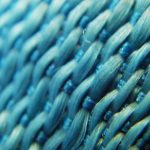Inductively Coupled Plasma Optical Emission Spectroscopy (ICP-OES) is a scientific method that uses plasma as its source and analyzes optical emission. The concept of this technology can be traced in spectrographs and spectroscopes, which enable visual analysis of spectral lines on a film.
ICP OES instruments emerged in the 1970s, and with the advancements in biotechnology, they eliminated barriers and made optical emission a common practice in labs.
The Use Of ICP OES Instruments
ICP-OES is typically utilized for fluid samples, but the sample must undergo nebulization before being inserted into the plasma. Although a vaporization method like laser absorption can be done, solid samples can be examined directly.
These instruments are very useful for analyzing complex samples like trace elements in a man’s brain, pesticide compounds, or the chemical composition of a vape. Additionally, the method has been beneficial in analyzing and purifying petrochemicals, water, and wine.
An ICP OES instrument requires several components to work successfully. For an accurate, practical analysis, the method needs the following:
- An energy source that can excite and atomize the atoms in the sample
- A system that will inject the sample into the plasma
- A program to detect and measure the light emissions’ intensity
- High-resolution optics that will monitor plasma emissions and separate or isolate the emitted wavelengths for measurement
- A device that will collect detector signals and operate the spectrometer
- A computer designed to compute and display the concentration values and emission spectra
Limits Of ICP OES Instruments
ICP OES also has limitations to consider before use, one of which is the requirement for aerosolizing samples. Although aerosolization techniques have advanced significantly, this prevents solid and liquid samples from being analyzed in their original state.
With that said, ICP OES is a destructive analytical technique since samples cannot be recovered after analysis. Because of this, the ICP OES approach may not be recommended for analyzing rare and valuable samples.
Advantages Of Using ICP OES
The ability to distinguish between the ratios and kinds of elements in complex samples is one of ICP OES’s known advantages. For instance, the composition of contaminated soil, heavy metals, and crude oil have all been accurately analyzed using ICP OES.
Additionally, researchers have recorded ICP OES successfully detecting up to 19 elements in a single analytical procedure. The simplicity of ICP OES instruments has made it possible to be used in chemistry education of both analytical reagent grade and pure spectral grade.
ICP OES can even be applied to radioactive samples to ascertain their elemental composition, and separate measurements can determine radioactive levels.
ICP OES Instruments In Today’s Biotechnology
With the continuous discovery of science and advancements in technology, spectroscopic analysis is a promising tool for quantifying elements in tough samples. It is an excellent choice for biological laboratories due to its easy utilization, stability, and low cost—more so for its capacity to assess refractory elements and handle large samples per day and run.







